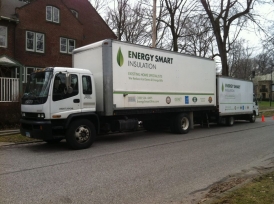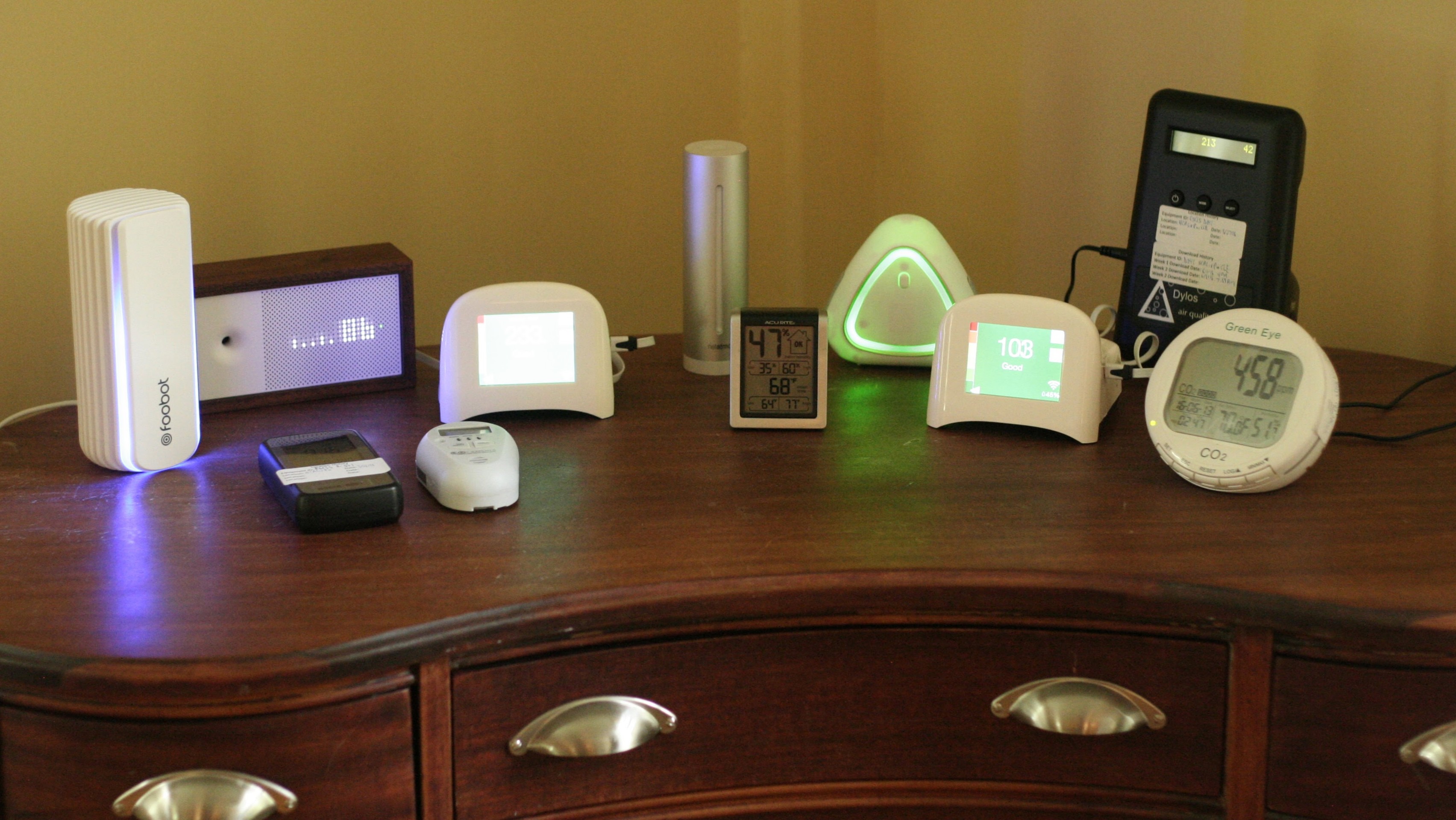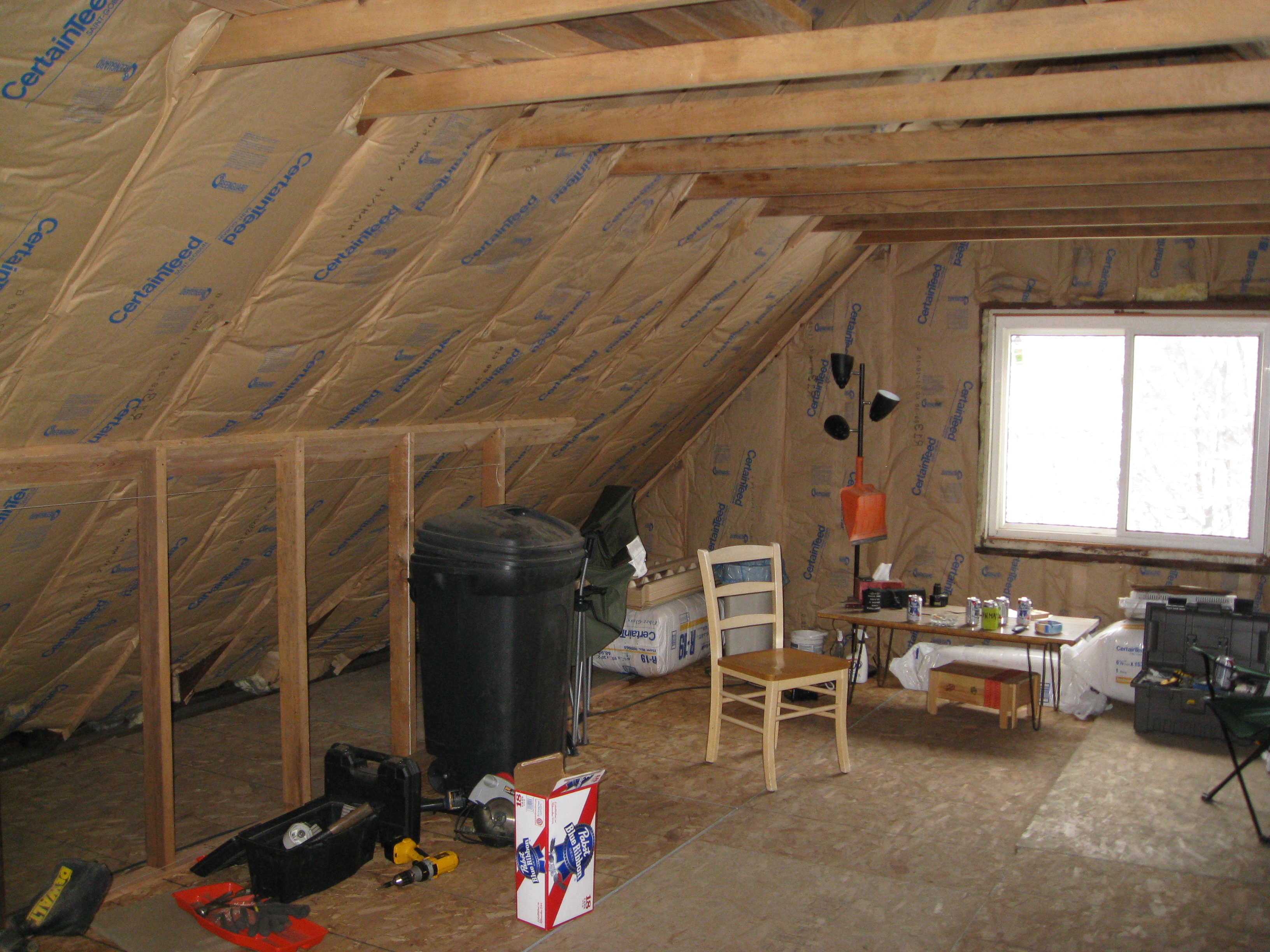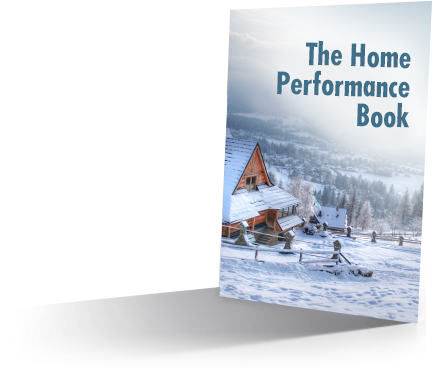What Infrared Camera Testing Looks Like (On My Own Home)
Have you wondered where your house leaks, where those pesky drafts come from? Good energy auditors can show you exactly where they are and often tell you how to fix them, too. It all starts with diagnostics, often including testing with an infrared camera.
Air Leaks: The most imporant factor in how your house performs.
Air leaks are a big deal, they are the single largest cause behind comfort problems, high energy bills, and often moisture problems. Almost no one measures air leakage, strangely enough, and if they do, they don’t show you how to fix the problems. Enter the dynamic duo of the infrared camera and the blower door.
An infrared camera is a powerful tool. They can literally see heat or lack thereof. But there is a problem when using them with existing homes – you need a lot of difference in temperature, or ‘delta T’ to see much, and even then there are likely leaks that you will never find out about.
Enter the blower door. A blower door is a big fan that goes in one of your doors and blows a little air out of your home to simulate a 15 mile per hour wind on all sides of your home at the same time. They can quite precisely measure the air leakage in your home, which, as mentioned earlier, is the single largest driver of comfort, energy use, and often moisture problems in homes. Yes, that’s a repeat, but an important one. Here is what a blower door looks like, in my front door, actually:
But when the blower door is paired with an infrared camera, magic happens. They can show exactly where cold air is flowing into your home where it shouldn’t be, and with a substantially lower delta T than is needed normally, so you can use them in more situations if you use them in tandem. It was a cold day today, around 40 degrees, so it was a great day to do infrared testing assisted with a blower door.
I’m a typical expert, like the proverbial shoemaker’s kids going barefoot, my house is not in as good of shape as my clients’ homes are. I’d like to take a few steps in the right direction. Besides, I was just as cold as you were last winter, and I’d like it to be a little warmer this year!
With the blower door running, here’s some pictures of what I found on my own home. Some stuff I knew, some stuff I didn’t. To see what the outside of my 1835 house looks like, take a look at this article about the couple of icicles I still get (yes, I embarass myself with radical transparency.)
Are you curious how your home would test? Read this first, and you’ll have an opportunity later to find out.
This is the blower door in the front door, which has a number of things to notice:
a. Note the purple/pink spots over the door. The insulation there is either allowing air to pass through it, or it’s sagging/not there. This is a sign of a poor job one way or the other. My home happens to have 3 different types of wall insulation – fiberglass, cellulose, and injection foam, the 3 types that are typically used. The only one I find to be consistent if done correctly is cellulose.1
b. See the purple spot on the wall just to the left of the blower door? That’s the light switch for the porch light. Most outlets leak, and it’s not necessarily a big deal because typically little pressure acts on them, but the blower door and infrared camera show it.
c. The windows in my house are quite old. The house was built in 1835, my guess is these are the second set of windows in it, probably around 1900. They leak. And it’s not easy to fix, but I may rebuild them and put better storms on if my wife and I decide to stay here.
d. The fan on the blower door is hot, as is the controller just below the gauge above the fan.
My home has baseboard hot water heat, which is fairly uncommon in Cleveland. That is what’s on the wall and you can see a big blue spot where a major leak is behind it. I’ve suspected a leak was here, but it’s not easy to feel the air leak, so an infrared camera is a good tool to find problems like this.
During the Polar Vortices last winter when Arctic air showed up in Northeast Ohio and other places it didn’t belong, I found myself wanting to be in the center of the house. These air leaks made the walls cold, which meant the average temperature of the surfaces in the room, or mean radiant temperature, dropped. If one surface is 50 degrees in a room, another equivalent sized surface needs to be 90 degrees to give a 70 degree average. This wasn’t possible during the cold snaps. Low mean radiant temperature (MRT) is very uncomfortable, and here is a cause.
This is what an unsealed exterior door looks like with the blower door sucking air out of the house. This goes to my cellar door stairs in the basement. It’s really uncomfortable to be near this thing.
Sealing doors is a very tricky thing to do without completely replacing it with a new door and custom seal around it.
Energy Smart did a little low income weatherization work, and I was introduced to a product called a Snowjamber, which is a piece of weatherstripping attached to door stop trim. Door stop trim is what stops a door from swinging all the way through the frame. Here is what one looks like:
Snowjambers are really versatile, you can seal the sides and top of just about any existing door. Maybe not perfectly, but pretty well. I have 4 outside doors on the first floor. My house used to be the general store for Mantua, it actually had 5 (!) outside doors before. I always used the kitchen door to set up the blower door and forgot to seal it. I fixed that today.
Remember what that unsealed door looked like? This one used to look like that. My wife and I used to always rush by this door because it was so cold to be near. You could feel a strong draft coming through it. Not anymore:
While the seal may not be perfect, the doorknob didn’t fit so I had to trim the weatherstripping a bit there, it’s pretty good and feels a heck of a lot better than it did before.
Note the bottom of the door, though. Unfortunately, the Snowjamber goes on the outside of the door, but door sweeps usually work better and don’t get ripped off when they are on the inside of the door. That leaves a door sized gap between the two seals, and you can see the results at the bottom of the door. I need to tinker with door sweeps on the outside…
I am NOT a fan of injection foam in existing home walls. This wall is the reason why. A few years back to practice for a job where we were going to take wood siding off a client home, we pulled some off of mine. I wrote a blog about it a few years back that still gets a lot of hits, you can see a video of what the opened up wall actually looks like.
Before explaining more, see the hot line at the bottom of the wall? The heat had been on, ignore that for now.
The wall injection foam shrank badly away from the studs and the wall, allowing lots of air to flow around it. See how the wall is mottled in color? That means that the insulation is not completely filling the void.
In this case it is really hard to fix, the best way is to pull off some siding, rip the foam out of there, reinsulate, and put the siding back on. What a pain. It’s a bummer, too, because this was probably a really expensive job.
This is another area I think is filled with injection foam (it’s not spray foam but a totally different formulation). It’s the back wall of the house on the second floor. Grrrrr. I may be able to do some strategic dense packing here, but to have this done by a contractor would cost far more than having it done right in the first place. Thankfully I was a contractor and kept my baby insulation blowing machine…
Moving on to less frustrating problems, in the breakfast area there is another major leak behind the heat vents. This was consistent through the whole house. I plan on spending a couple days this winter chasing leaks like these. Lots of caulk and foam in my future…
There is a curious leak behind my electric box, look at the top left of it. The next leak over is actually the basement window. I thought they were high quality, but apparently not as good as I thought…
See the leak over the window? That’s me not finishing something. It’s a hole for the pipe of a sump pump to go out, a sump pump I never finished installing. Maybe this winter…
This might surprise you, it’s the vent for my boiler. It leaks like a sieve and can be one of the biggest air leaks in a home. If you have high efficiency equipment it has plastic pipes that go out the side of the house, not a metal one that goes to the chimney, which means your home doesn’t have this leak. It’s a side benefit to high efficiency equipment. It’s important to change the water heater, too, though, and we typically include these in the recommendations to our clients. Of course, this is a shoemakers’ kid post, so here is my old school water heater next to the boiler:
ou can see the cold part on top of the water heater on the right, that’s the flue. The boiler has some hot spots, and the cold spot to the left of the boiler is my water softener full of cold outside water.
We actually prefer to get rid of all combustion equipment entirely (meaning furnaces, gas fired water heaters, and other appliances that burn fuels) to eliminate the potential for carbon monoxide in your home, but that’s another article.
Going back up the basement stairs there is a missed cavity behind the canning supplies. It’s a really nasty leak on the right. It’s not a flaring pattern, as you’ll see shortly, so it’s likely air behind the drywall, not a leak that can be sealed from the outside. This is what leaky outside walls look like.
In the pantry that leads to the basement stairs (which are just to the left) we have a cabinet that stays so cold we put our pop and other cold beverages in there. Not surprisingly, the doors light up blue, and the corners of the cabinet have some leaks. A little foam should help, here is what those leaks look like:
See the flared pattern? That usually indicates an air leak into the house, and there was a crack in there, so this is an easily solved problem.
One last infrared pic. This is the rear addition of my house that has a laundry room and first floor bath, built in 1988. So it’s typical of new construction, methods haven’t changed that much since then. (I look forward to the emails commenting about that one…)
Note the studs, and particularly the corner. This indicates leakage at the top plates, which is the board at the top of walls. We shouldn’t be able to see the studs that well, especially the corner ghosting. These leaks have to be hit from the attic and are part of attic air sealing.
Pretty cool, huh? Want to see this on your own home?
This sort of diagnosis is part of coming up with plans to solve problems that you call Energy Smart about. We have to poke and prod you first to find out what problems you want fixed and how badly, then we poke and prod the house to figure out what the causes of those problems are.
Infrared imaging is not part of our standard energy audits, but sometimes we’ll take a few pics for good measure. If you want to see more, though, it’s a little extra, but you’ll get a picture album with our notes on the pictures like this one of my own house.
It’s important not to just get blower door assisted infrared pictures out of pure curiousity, though. These are diagnostic tools to get to the root of problems you are experiencing with your home. And it’s very important to have a basic understanding of the physics at work in your home, so when we visit you we don’t sound like Martians. Before reaching out, we HIGHLY recommend that you spend some time looking around and reading the site, a few links to start with are below.
If you know that Energy Smart is the one for you, the first step is an inital consultation, which comes before the energy audit itself. We’ll ask you questions to see if we can help and if we’re a good fit for each other, then find out how much your house leaks with the blower door. After all, air leakage is often the biggest factor behind comfort problems, high energy bills, and moisture, right?
To get a substantial discount on an initial consultation, fill out our questionnaire:
Further Reading
If this is the only article of ours you’ve read, it’s not enough. Please spend some more time on the site before reaching out, here are some great places to start, and we appreciate you spending the time checking them out!
Picture Album of My House – Every energy audit gets one of these, here is the album I started for my house with more infrared pics and details of the Snowjamber installation.
The Science Behind What We Do – Home Performance is rooted in science. Everything is interconnected, and we try hard to keep those connections in mind. Here’s the basics.
Problems We Can Help With – Want to know if we can help? Here’s a starter list of problems we can likely solve.
Indoor Air Quality – Did you know the air inside our homes is usually 2-5 times more polluted than it is outside? It is. Here’s the rundown on IAQ.
Indoor Environmental Quality (IEQ) – True comfort is more than just thermal comfort. Find out more about what is involved here.
1 Check out this Building Doctors video about doing dense packed blown in cellulose right.
Get the HVAC Guide

It's free! Make buying a new furnace, air conditioner, or heat pump less stressful.










